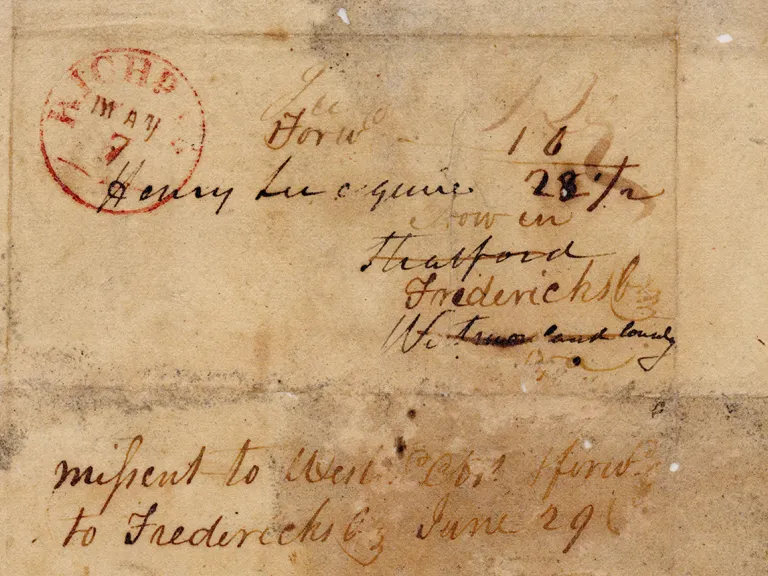The John Marshall Center for Constitutional History & Civics (JMC) and the Virginia Museum of History & Culture (VMHC), following their union on July 4, 2023, launched the John Marshall Historical Collection. This exciting acquisitions initiative documents the public and private life of the United States’ longest serving chief justice through original manuscripts, estate papers, rare books, painted portraiture, and furnishings.
About the Collection
The Collection’s foundation is the VMHC’s existing John Marshall material, which includes thirty-five Marshall manuscripts and what are reputed to be the first two items in VMHC’s nearly 200-year-old collection: Marshall’s two-volume The Life of George Washington, presented by “the Author” himself (1832). In addition to paper items, the Collection features the James Reid Hamblin Marshall portrait painted from life (1832) and Marshall’s desk (1780–1805). Marshall’s only surviving judicial robe, owned by Preservation Virginia, is currently on loan and display in the VMHC’s The Story of Virginia exhibition.
Joining the Collection from the JMC’s holdings are over 250 documents, including a sketch of Agnes Spurlock, the daughter of Marshall’s enslaved butler, Robin Spurlock, as well as items from the “Papers of James K. Marshall,” Marshall’s son who served as executor of his estate (some of these items are indexed in William and Mary’s The Papers of John Marshall). James C. Stribling, a Marshall descendent, is generously donating a new set of documents featuring more than 50 items from the Chief Justice’s estate papers, including an inventory of books from his library. Significantly, these papers document Robin Spurlock, Agnes’ father, and the enslaved people at Chickahominy Farm.
These three collections come together as one, a crucial addition to the wider John Marshall archive and a vital resource for researchers.













